
Issue #: 163
Published: January / February 2019
- Price per issue - digital : 6.50€Digital magazine
- Price per issue - print : 7.90€Print magazine
- Access to Multihulls World digital archives Digital archives
In the Selat Badung, Jangada speeds along at 12 to 13 knots, carried along by a strong south-west going current. The swell in this strait is impressive, with 5 to 6 meter waves, despite the wind not getting above 15 knots. The entrance to the port of Benoa isn’t easy to find, especially as we were crabbing across, with more than 40° of leeway… I’d never seen anything like it. We had arrived in Bali!
As we headed into the pass, the banks of coral broke up the water and it calmed down again. Xavier, who works with an Ocean Voyager Fast 62 catamaran, (built in the shipyard that I used to be in charge of not that long ago), came over in a Zodiac. He guided us to a rather unusual mooring: alongside a great big floating wreck. A big catamaran, with no mast, which must be the result of major architectural and construction errors. It was an ideal spot for us. Like Jangada’s own personal giant dinghy, which the children would soon colonize…
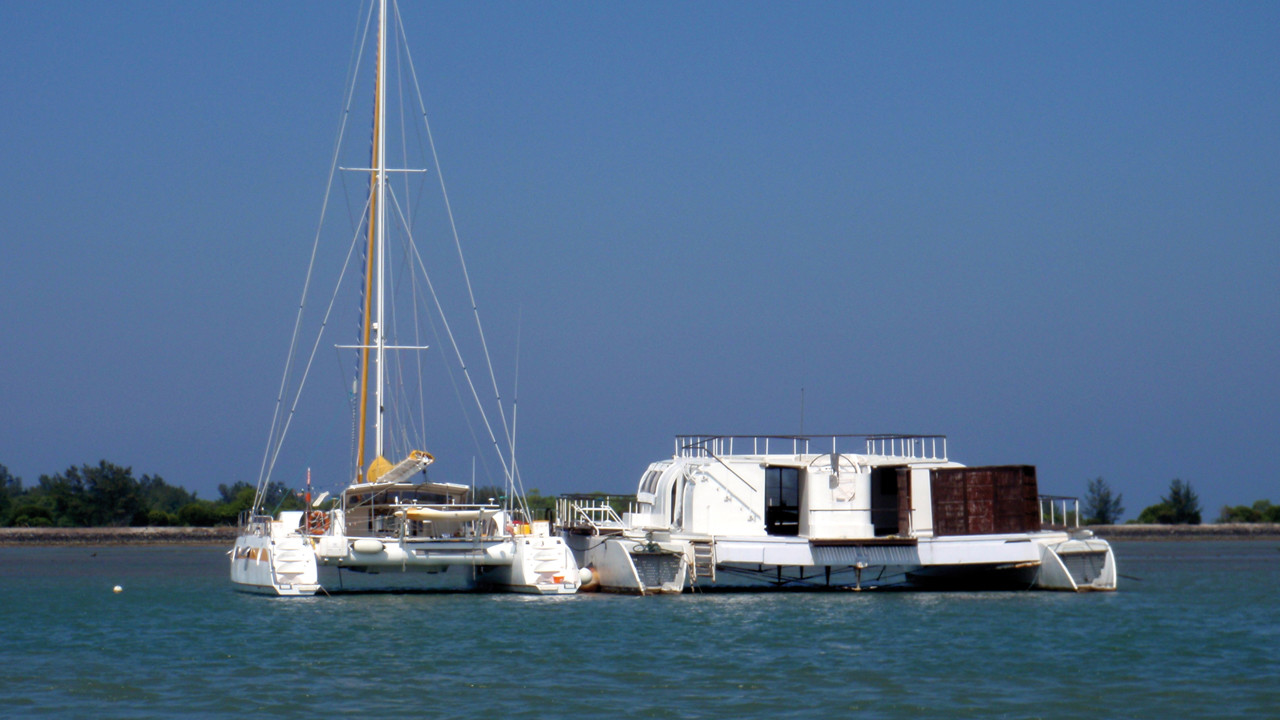
Bali, We’re In Bali!
As there was no space in the tiny marina, we moored up alongside this failed boat, which served as a large platform for Marin and Adélie to transform into their personal games room while we were there. Xavier introduced us to Moody, a resourceful Balinese chap, who rented us a car for the duration of our stay at a very competitive price. He also did lots of things for us while we were there. As we couldn’t get into the marina, he brought over jerrycans of diesel. In total he brought over 1000 liters to fill our two tanks, and paid the derisory price of 5,500 rupiahs per liter, or 45 euro cents! What’s nice in Bali, is their notion of service and availability of the Balinese. It’s not just that everything’s possible, it’s also the fact that they are usually very efficient too. And always with a smile!
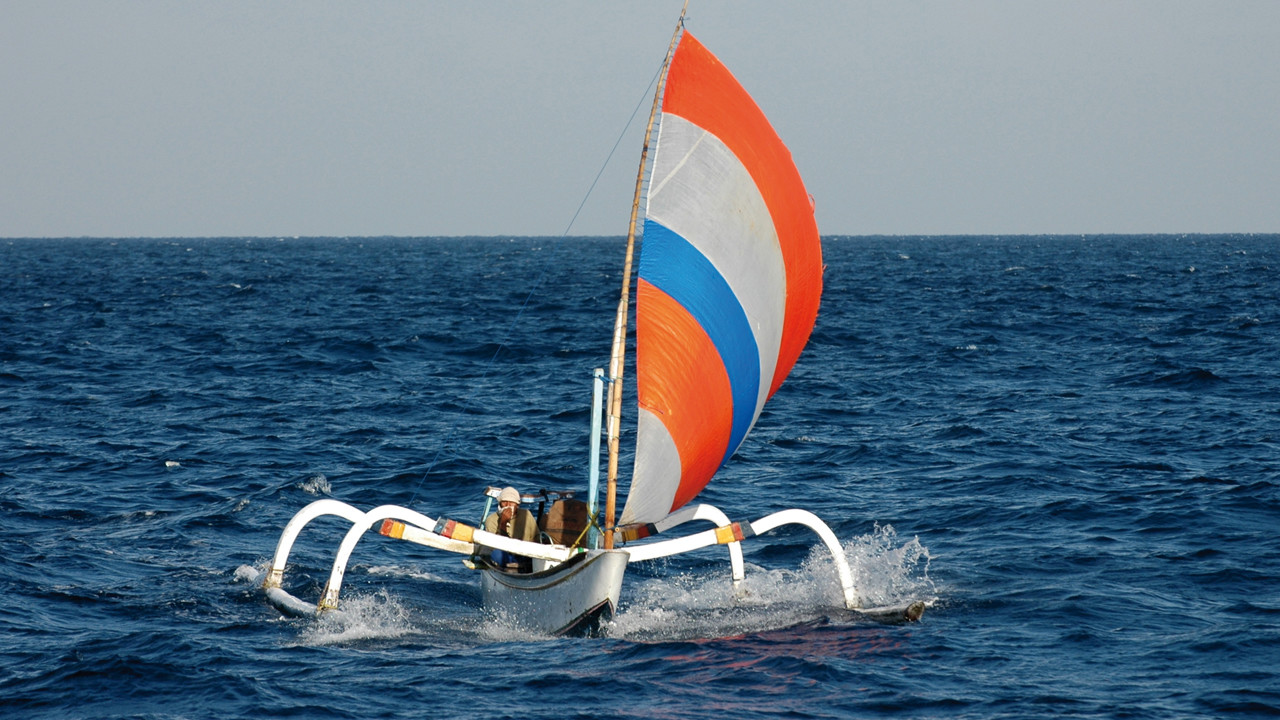
Bali is a small island with a little more than 3 million inhabitants. It’s the only Hindu territory in the immense Indonesian archipelago, which is mainly Muslim. However, the Balinese idea of Hinduism is rather different to that in India. It’s a kind of amalgam of certain Hindu beliefs, Buddhism, old Malaysian cults, and blended with some animist beliefs. This amalgamation of religions is strongly entrenched in the Balinese daily life. It’s what helps to create the charm and the interest of this very touristy island which has managed, despite the many visitors who are concentrated in certain areas, to create and preserve traditions and a culture which is unique in the world. I was particularly impressed by the calm and tolerant nature of the locals.
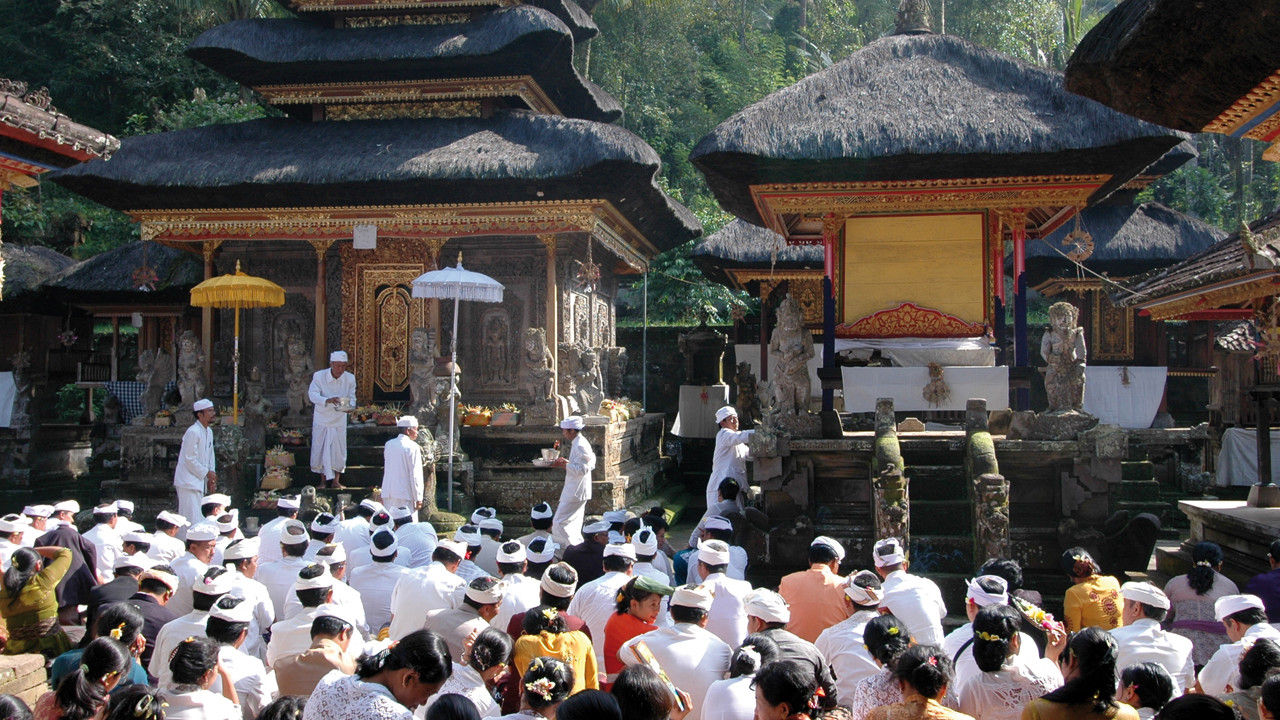
Religion is well integrated into Balinese daily life, and it just seems to be totally natural to them. Religious rites and prayers are a daily duty, and in them one can see both the religious fervor as well as their skill in making offerings, upon which some Balinese spend up to 40% of their income. Some of the rites are definitely animist. By chance some of the visits we made during our stay, we saw some of these different, colorful ceremonies.
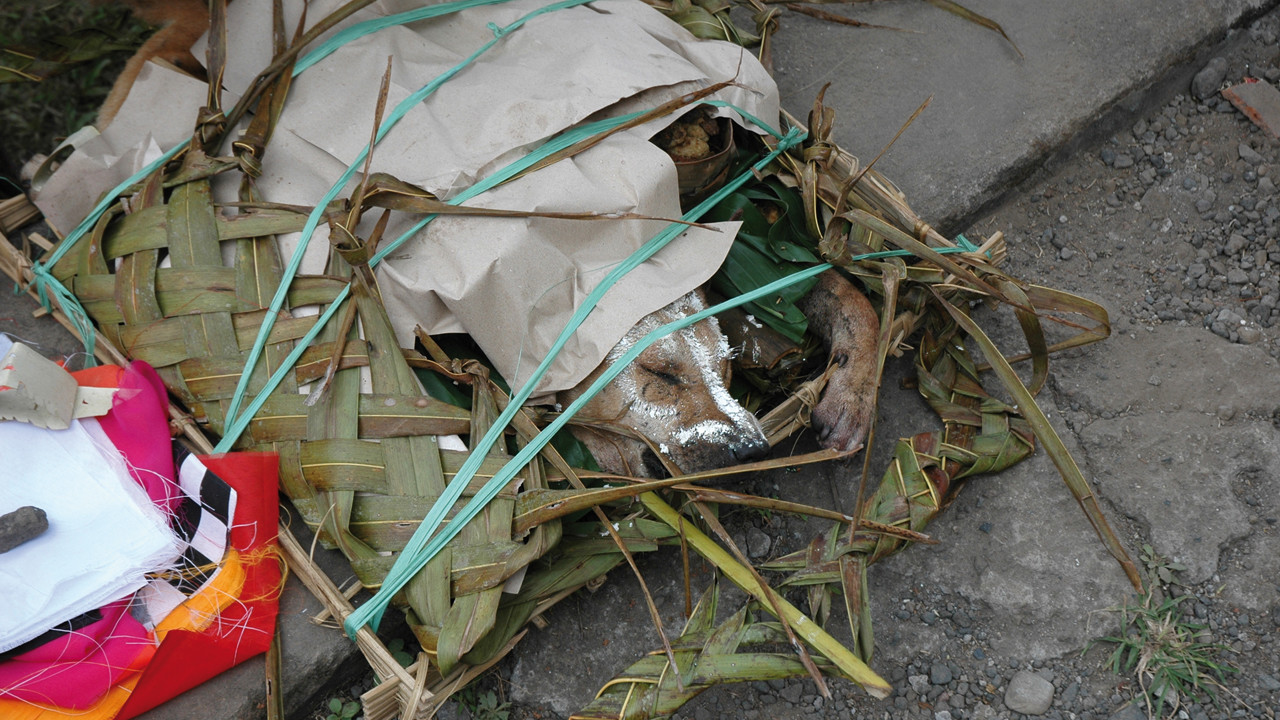
Of course the animal sacrifices are the rites which impact us westerners the most. From the sacrificed dog to the duck thrown in the sea with its feet tied so that it gently drowns after desperately trying to save itself, or the pig cut into fine strips of lard decorated with red chilies and the complex fruit and vegetable figurines, Balinese Hinduism never ceases to amaze. Among other things, it’s down to the contrasts: on the one hand, a tolerant, welcoming people who accept you despite all their religious duties. On the other hand, a brutality which can lead to a duck being decapitated in the street and the blood sprayed around the family home… Religion is everywhere in Bali. There are temples in every village and shrines in every field. Every morning, the Balinese place their offerings for the good spirits, and leave other ones around to calm the evil spirits. Every morning when we arrived on the pontoon, we were sure to find the offerings left by the night watchman at first light. This graceful and aesthetic ritual is practiced throughout the island. Almost every village has at least three temples : the most important one, the the Pura Puseh, is dedicated to the founders of the village; the Pura Des Ais for the spirits that protect the daily life of the community and the Pura Dalem is the temple dedicated to the dead. Families honor their ancestors in their family temple, and their clan also has its own temple. Each village or clan has its own calendar for the various festivals, which meant that we were able to be present several times when there were preparations or processions taking part in various parts of the island. One of them was a ceremony on the beach at Tugu in the west.
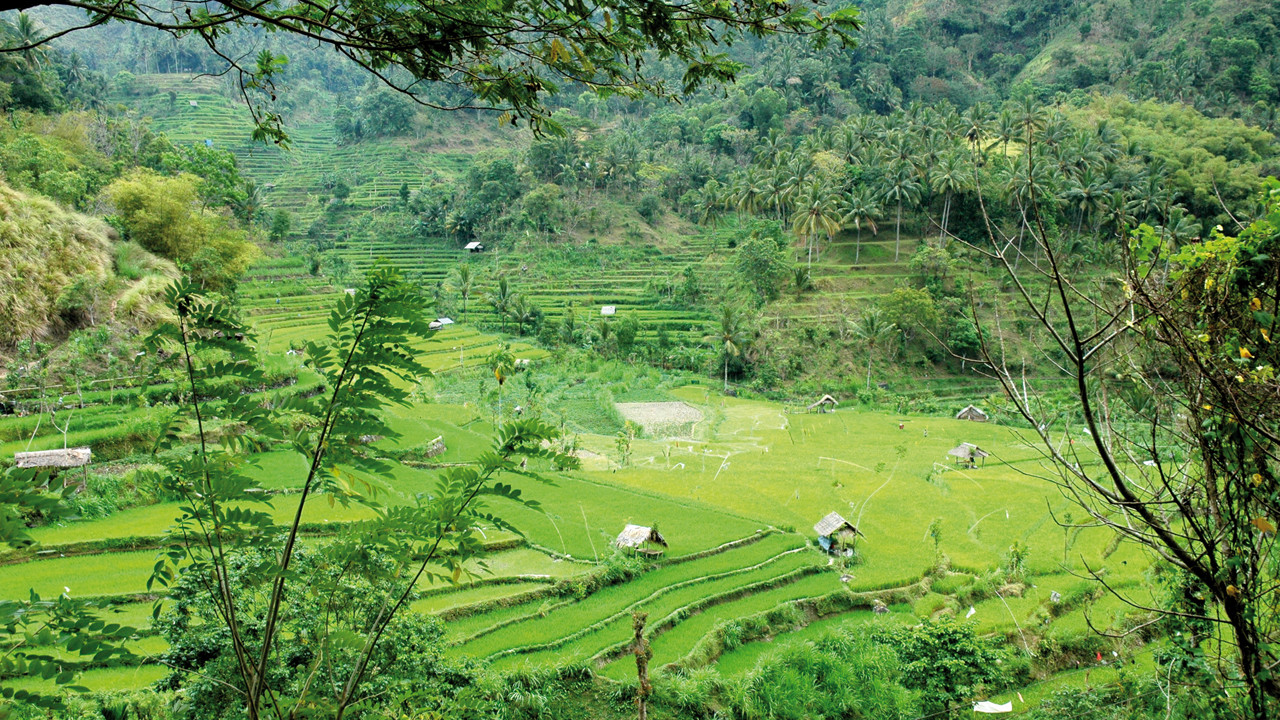
In the Paddy Fields In The East Of The Island…
Bali’s paddy fields are very different to the areas of Kuta, Seminyak or Sanur. By that I mean that there are practically no tourists. No noise, no cars or mopeds, no Rip Curl or Quiksilver shops… A large part of Bali’s agricultural land is given over to rice production. The rice is harvested by hand, mainly by the women. One night we stayed in a guest house near Abadi in the east of the island. I loved getting up at dawn and going out onto the terrace of our hut that was lost in the lush vegetation made up of hortensias and frangipanis, and to just watch the sun rise over the hills to the east. Below was a magnificent green landscape of terraced rice fields. These landscapes haven’t changed for centuries. They exude a serenity and peace. Rice, life…
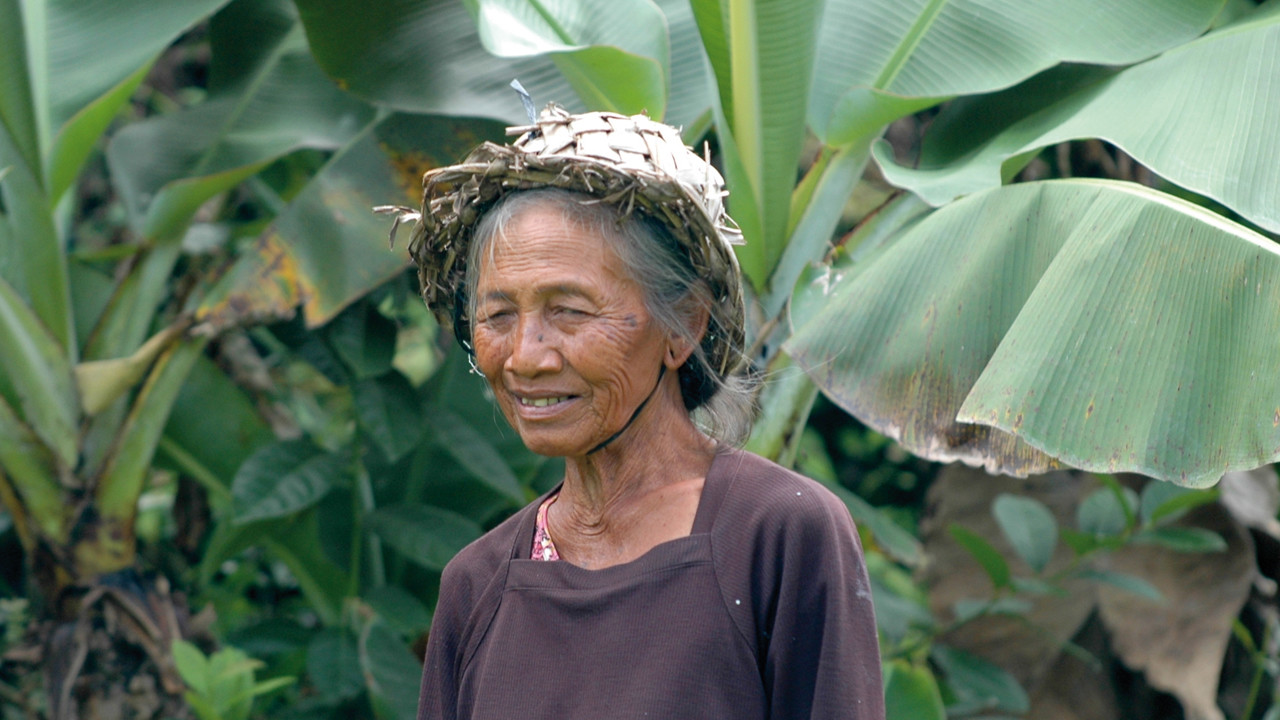
Surf Riders Out West…
There are loads of good surfing locations on Bali. Along with its neighbor Lombok, there is plenty to attract surfers from around the world. The local geography and the weather conditions mean that at this time of year, there is a good number of high standard surfing areas, and sometimes of a wave standard that is only suitable for the most experienced surfers. Waves rise and break continually on the southern coastline of Bali, and it isn’t unusual for waves to be 5 or 6 meters high. Bali has some of the world’s best known surf spots: Ulu Watu and Padang Padang in the west, Nusa Dua in the east and Impossible Beach in the south.
The children surfed a little further north on the beaches of Tugu, Echo and Kuta, where the waves are a bit more manageable. And of course, we flip-flopped around the Surf Factory and the pretty Rip Curl shop on Sunset Road. But today we had decided to go and discover Ulu Watu and Padang-Padang in the far south west of the island. The four of us got into our 4x4 Daihatsu and set off for the Bukit peninsula. We encountered the local fauna: surfers from all over the world. Most of them were Australian, Brazilian and French. There were some Indonesians too. And all the others. The surfers arrive with their girlfriends, and on this score the Brazilians are the most eye-catching, and the least covered up too! There’s an air of sun-screen, burgers and beer. There are some handsome, tanned and muscly surfers, but they aren’t in the majority. Many of them are white, or even red, and carrying a few too many pounds. Too much time spent at the bar to be attractive, and maybe a few too many good meals. Most of the surfers get around on scooters, and here they have lateral supports for their surfboards. Food isn’t expensive. A meal costs 50000 rupiahs, (less than 5 euros), and there are plenty of local guest houses. Some die-hard surfers come from across the globe to spend a few weeks here.
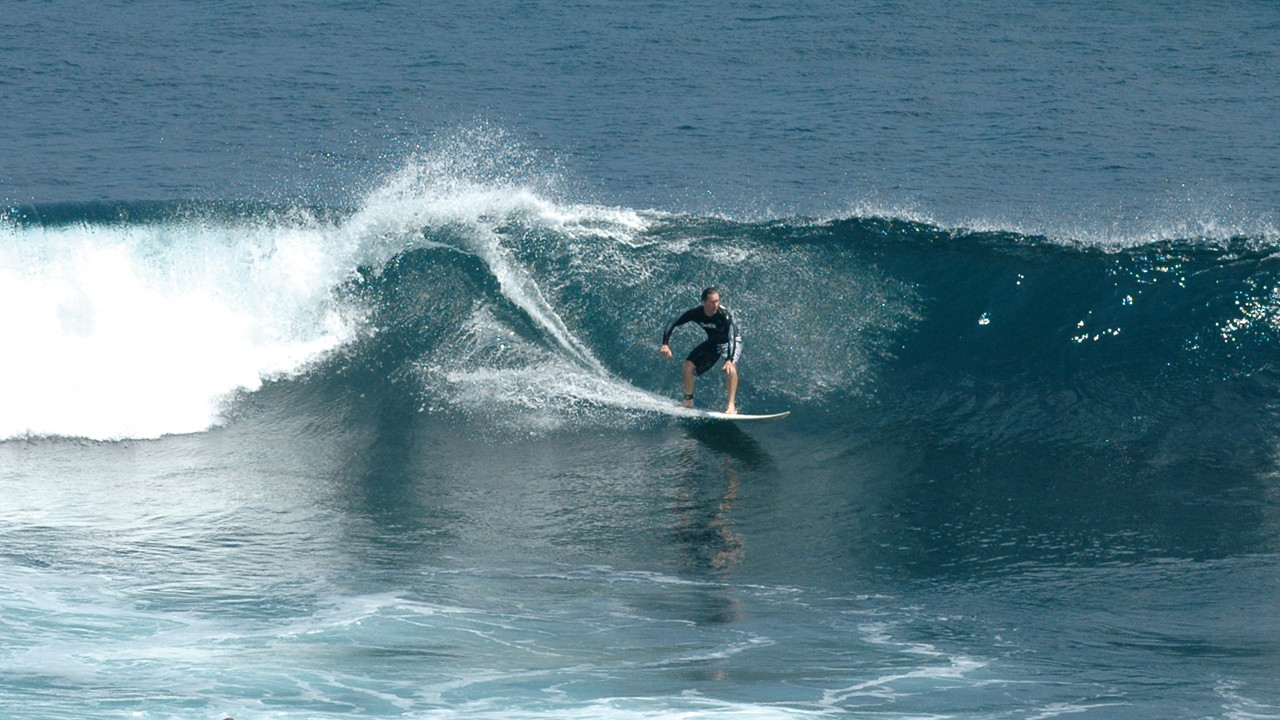
Meeting Up With Old Friends…
In Bali, we had the pleasure of meeting friends and their two children, from La Rochelle, back home in France. After three oceans and two years of separation, the kids hit it off again very quickly and easily, which augurs well for our return home in 10 months’ time… We found out fresh news and gossip, which was nice but which made us think about going home. Marin and Adélie are reassured that they can still get along with kids of their own age who live on land. For some time on board they had been worrying that they might feel as though they had been completely left behind by their peers when they get home, given the strange life that their parents have decided to live over the last few months… Bali will no doubt stay in our memories as one of the most colorful stopovers on our journey. It was a happy blend of emotion, discovery and encounters.
Our time in Bali was coming to an end. I was starting to spend more and more time looking at the chart of the southern Indian Ocean. On the paper version, my eye alighted on some tiny dots which I had been aware of for some time. First was Christmas Island. Then the small Cocos Keeling archipelago. Names which conjure up exotic images. Our route back to Europe via South Africa will veer off a little to the south west as we leave the Indonesian archipelago. The Indian Ocean awaits us. It’s not always an easy place to sail, but as ever, we’ll just see it as a learning curve…
Bali will no doubt stay in our memories as one of the most colorful stopovers on our journey
What readers think
Post a comment
No comments to show.